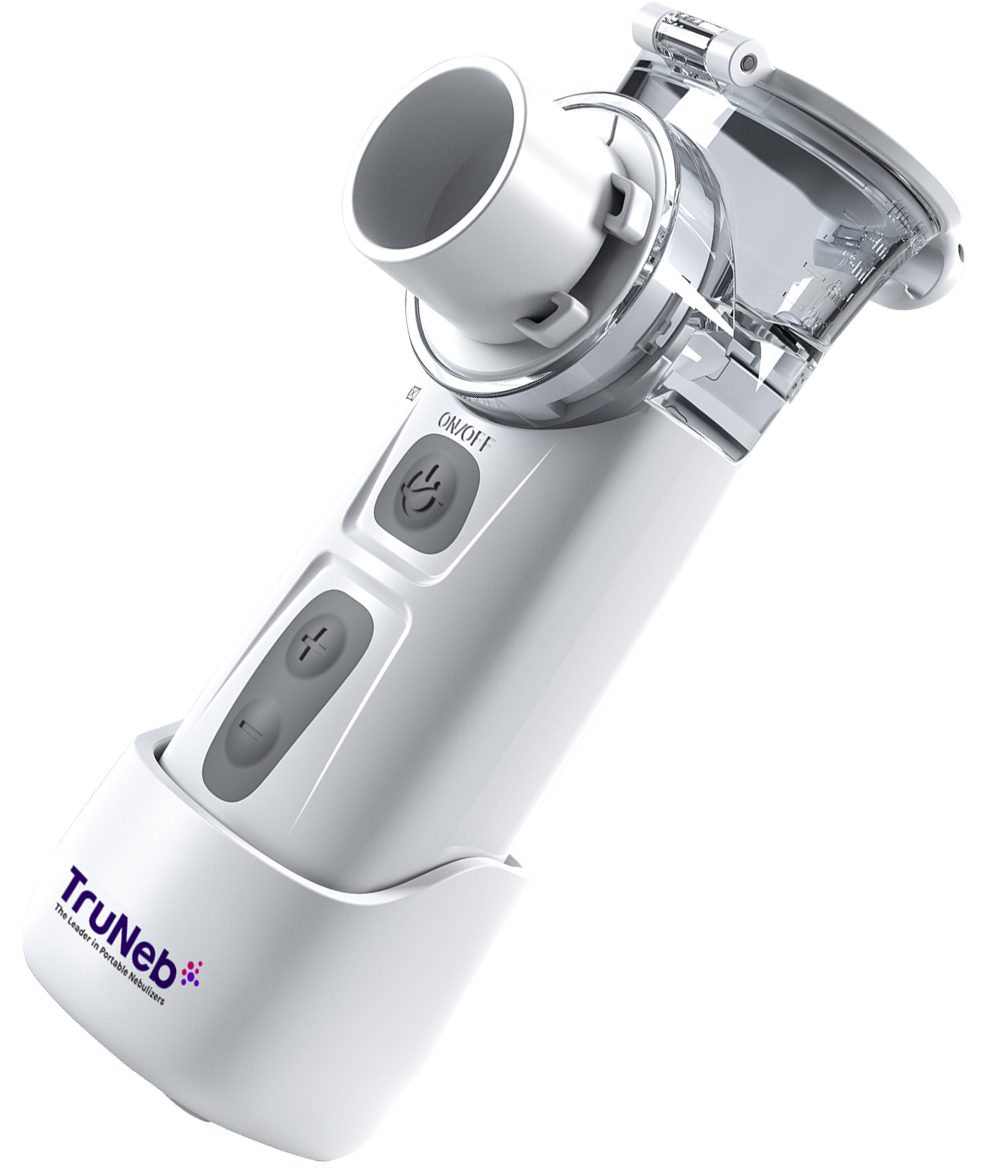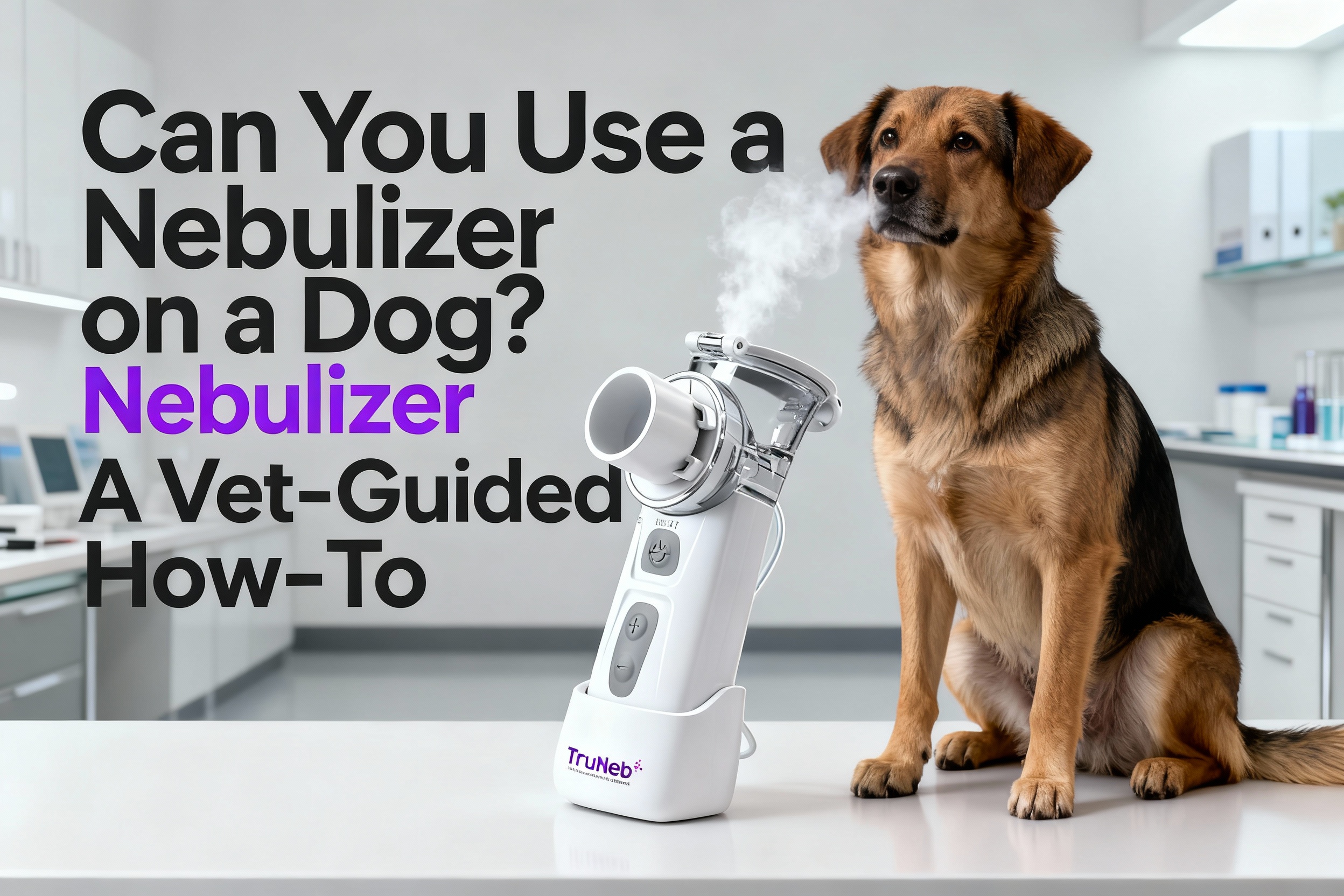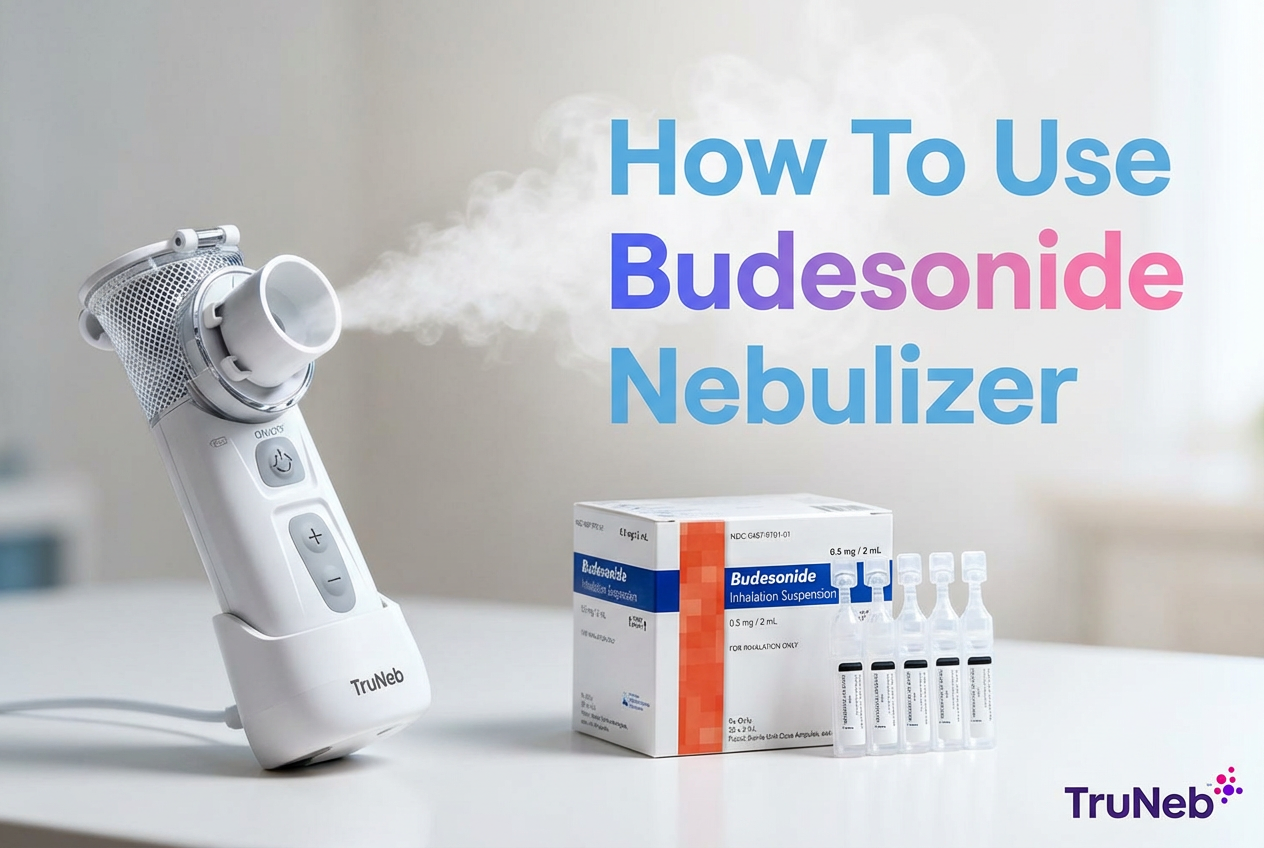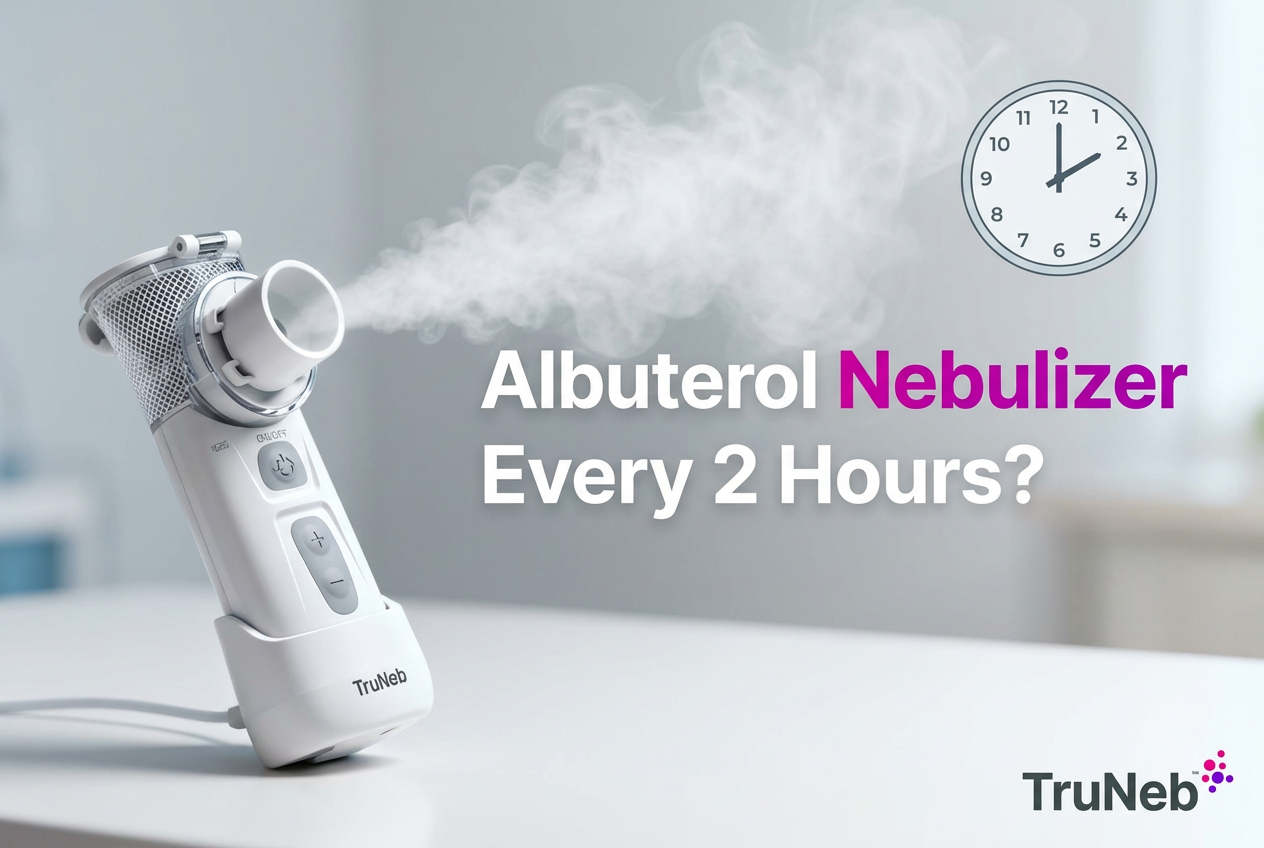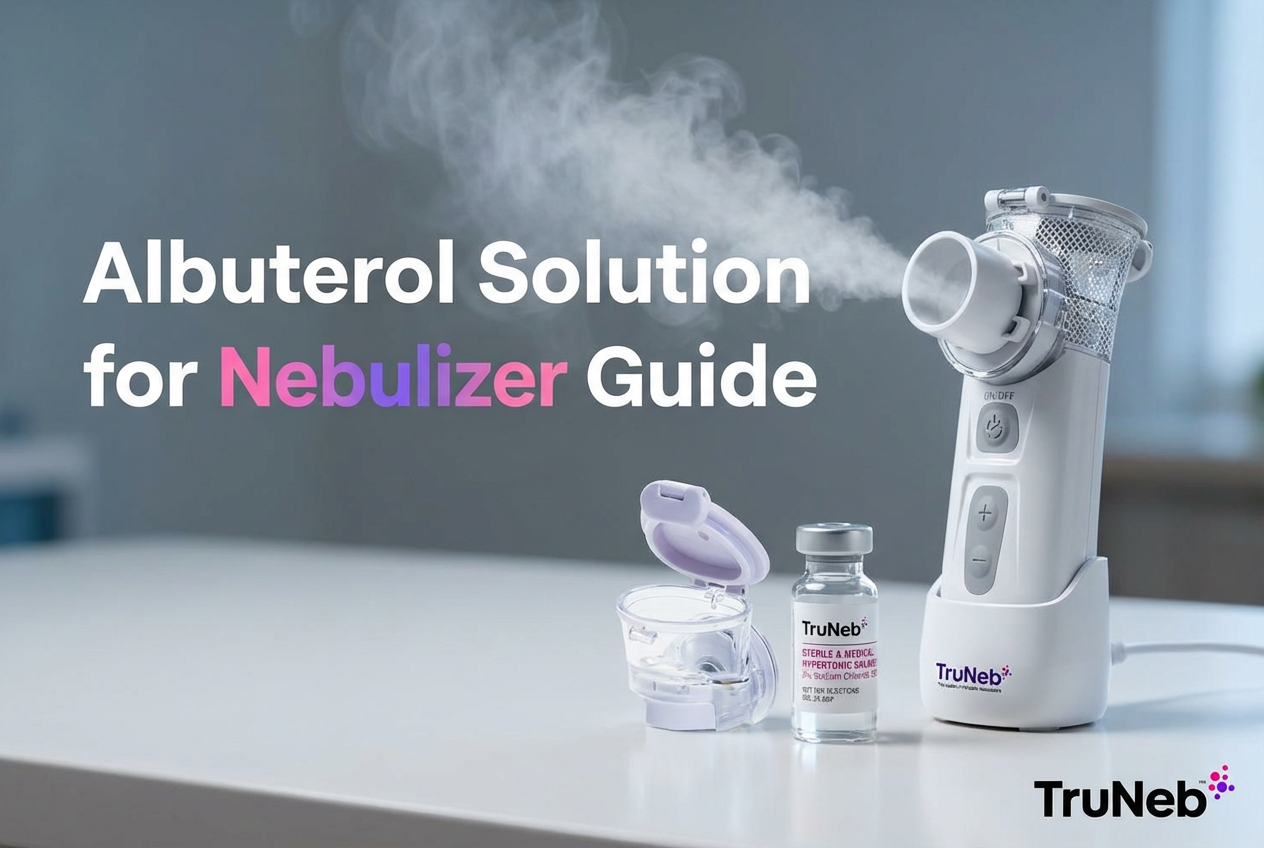On this page

Nebulizer Use in Pregnancy – Getting the Facts
Yes—using a nebulizer during pregnancy is generally safe when your doctor prescribes it. The device turns liquid medicine into a fine mist so you can breathe it into your lungs.
The key safety point is the medication, not the machine. Doctors choose medicines with strong safety data in pregnancy because when you breathe well, your baby gets steady oxygen.
Treat symptoms early—waiting can be riskier than taking your prescribed meds.
If you have severe symptoms like trouble speaking, blue lips, chest pain, or worsening shortness of breath, seek emergency care right away.
Why Controlling Asthma During Pregnancy Matters More Than Ever
Asthma is common in pregnancy. If it’s not controlled, low oxygen can stress both you and your baby. Uncontrolled asthma is linked to more attacks, hospital visits, preeclampsia, preterm birth, and low birth weight.
Think of it like putting on an airplane oxygen mask. When you breathe well, your baby gets steady oxygen.
Quick takeaway: untreated asthma carries more risk than standard inhaled medicines.
Safe Asthma Medications in Pregnancy – What Can You Take?
Here’s how common asthma medicines fit into pregnancy care:
- Rescue bronchodilators: Albuterol (and levalbuterol) are the go-to quick-relief meds. They act fast to relax airway muscles. You can feel brief jitteriness or a faster heartbeat. These effects are usually mild and don’t harm your baby.
- Inhaled corticosteroids (ICS): Budesonide has the most pregnancy safety data and is usually preferred to keep daily control. Inhaled steroids work mainly in the lungs, so only tiny amounts reach your bloodstream.
- Add-ons when needed: Ipratropium is commonly paired with albuterol during stubborn flare-ups. Montelukast can help some people with allergies or exercise-triggered symptoms.
- Short courses of oral steroids: Doctors use short courses of prednisone for severe attacks when needed. When you need it to breathe, the benefit outweighs the small, temporary risks.
Simple guide: keep the lowest effective dose that controls your symptoms, and let your doctor adjust if things change.
In short, commonly used inhaled medications like albuterol and budesonide are considered safe in pregnancy when prescribed.
| Medication | Use | Pregnancy notes |
|---|---|---|
| Albuterol (salbutamol) | Quick relief of wheeze/shortness of breath | Widely used; transient jitteriness or faster heartbeat may occur; benefits outweigh risks |
| Levalbuterol | Quick relief alternative | Similar to albuterol in effect and safety |
| Budesonide (inhaled corticosteroid) | Daily controller | Strongest pregnancy safety data among ICS; often preferred |
| Ipratropium | Add-on during flares | Commonly combined with albuterol; acceptable when prescribed |
| Montelukast | Allergy/exercise-related control | May be continued if effective; discuss with your clinician |
| Prednisone (short course) | Severe exacerbations | Use when needed; treating severe attacks protects mother and baby |
Use only as prescribed; decisions are individualized. Sources: MotherToBaby; GINA Pocket Guide.
What About Medications to Avoid?
Most standard inhaled and nebulized asthma medicines are considered compatible with pregnancy. Avoid unproven herbal remedies or over-the-counter cough mixes as substitutes for your prescribed plan. If you have questions about a specific drug, ask your doctor before you start or stop anything.
Using a Nebulizer While Pregnant – Best Practices for Safety
Using a nebulizer in pregnancy is the same as usual. Focus on comfort, timing, and clean gear.
- Sit comfortably with good back support. Keep your chin level. If you feel lightheaded, pause and reposition.
- Use only medications and doses prescribed by your doctor, and follow your device’s instructions for setup and use.
- Treatments typically take about 5–10 minutes—follow your action plan and device instructions.
- Clean after each use: wash the cup and mask in warm, soapy water; air-dry on a clean towel.
- Keep your device ready. If you use a portable mesh nebulizer like TruNeb™, keep it charged and store spare batteries so a treatment is always ready.
You might see products labeled "steam inhaler" — these are NOT for breathing prescribed medications.
Tip: treat early signs (like tightness or wheeze) as your plan directs. Early treatment can prevent a full-blown attack.
If symptoms are severe or not improving, follow your red-zone steps and seek urgent care.
Using and cleaning your nebulizer the usual way keeps treatments safe during pregnancy.
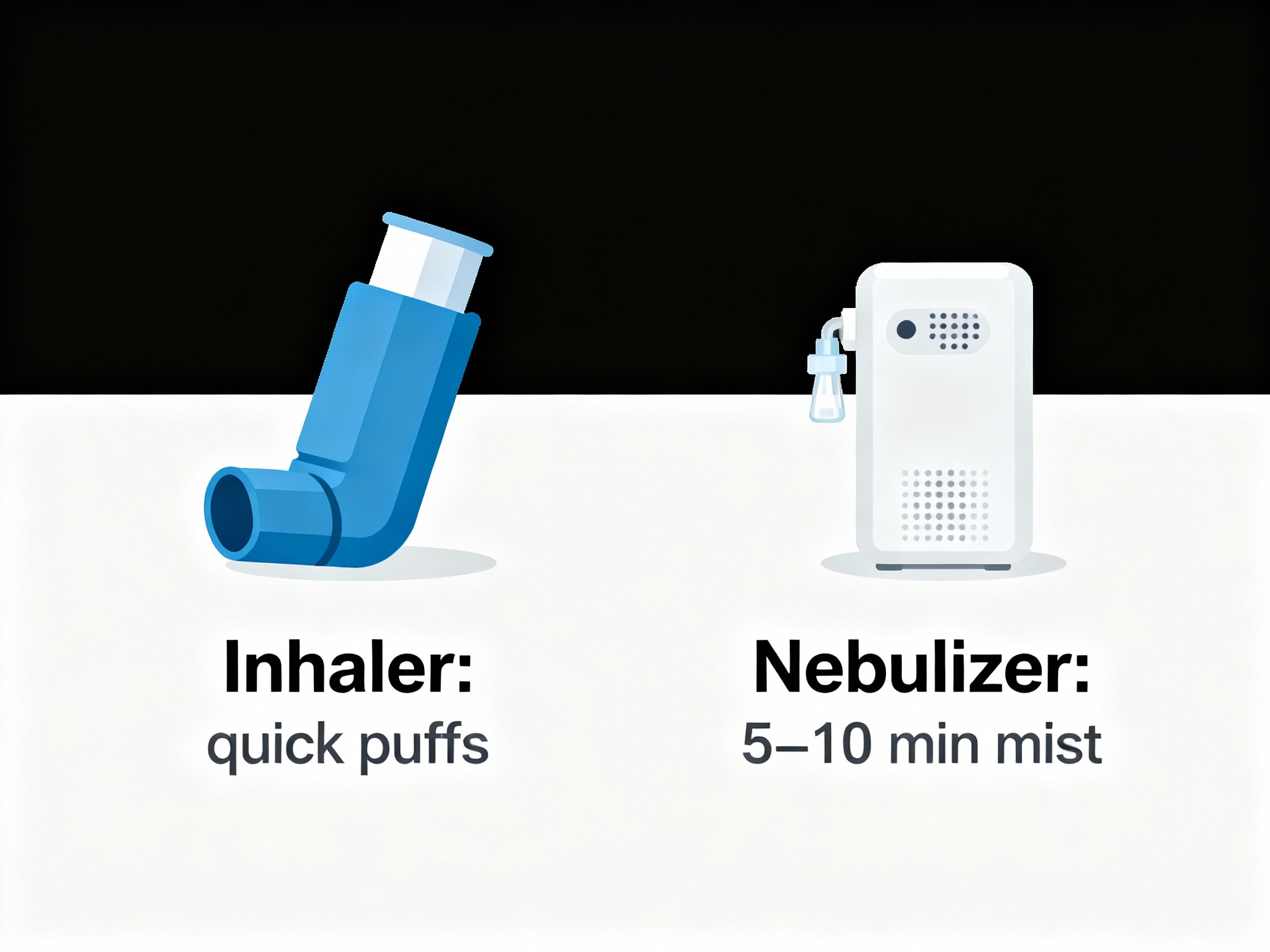
Nebulizer vs. Inhaler – Which Should You Use?
Both deliver medicine straight to your lungs and are considered safe in pregnancy. Inhalers (with a spacer) are fast and pocket-friendly. Nebulizers can be easier during bad flare-ups or when inhaler technique is hard.
If your doctor prescribed an inhaler, you don’t need to switch just for pregnancy. Some people keep an inhaler for everyday use and a home nebulizer for tough days. A quiet, portable option like TruNeb can make taking a treatment easier when you’re away from home.
Any Side Effects to Be Aware Of?
It’s common to notice a mild tremor, jitteriness, or a brief rise in heart rate after a bronchodilator (like albuterol). A dry throat or cough can happen from the mist. These usually fade quickly and don’t harm your baby. If symptoms feel severe, unusual, or don’t pass, contact your doctor.
Bottom line: Nebulizer treatments, when prescribed, are safe in pregnancy and help keep steady oxygen to your baby.
Safety note: Talk to your doctor before trying a new medication or changing your asthma plan.
Developing an Asthma Action Plan for Pregnancy (Doctor Involvement)
Share your asthma history with your OB/GYN and your primary or lung doctor early in pregnancy. Ask for a written action plan with green/yellow/red steps so you know exactly what to do as symptoms change.
What to include:
- Daily control: which controller to take and when.
- Rescue steps: when to use your inhaler or nebulizer, and how often.
- When to call: signs that mean you should call your clinic or go to the ER.
- Trigger plan: ways to avoid smoke, dust, and pollen.
Your doctor might review your control monthly and recommend a flu shot to lower infection risk. If asthma is severe, you might get extra check-ins to be sure your baby’s growth stays on track.
A written pregnancy-specific asthma action plan helps you know exactly what to do as symptoms change.
Additional Tips – Home Remedies & Precautions (Beyond Medication)
- Hydrate and humidify: Sip water and use a clean humidifier to ease dry airways. Nebulized saline can soothe, but it doesn’t replace your rescue meds during a flare.
- Avoid triggers: Keep smoke out of your home, use a HEPA filter if you can, and check pollen or air quality before outdoor plans.
- Positioning and gentle breathing: Prop up with pillows if reflux or nighttime tightness bothers you. Simple breathing exercises can help you relax and breathe more efficiently.
- When in doubt: If shortness of breath feels different than usual, call your doctor.
Simple habits—hydration, trigger control, and comfortable positioning—can reduce flares.
Frequently Asked Questions
Tap or click a question below to see the answer:
Yes—when prescribed by your clinician. A nebulizer delivers medicine directly to your lungs. Keeping asthma controlled protects both you and your baby. Always follow your asthma action plan and your doctor’s instructions.
Both are considered safe and often use the same medications. Use the device you can use correctly and that best controls your symptoms (a spacer helps with inhalers). Nebulizers can be easier during bad flare-ups or if inhaler technique is difficult.
There’s no evidence that standard inhaled or nebulized asthma medicines harm the baby when used as directed. These medicines act mainly in your lungs; only small amounts enter your bloodstream. The bigger risk is uncontrolled asthma.
Use your rescue inhaler or nebulizer immediately as your action plan directs. If you’re not improving within 15–20 minutes or symptoms are severe (trouble speaking, blue lips, chest tightness), seek emergency care right away.
Don’t stop medications on your own. Talk with your doctor about any changes. Most standard inhaled therapies are continued; doses may be adjusted, and some options (like budesonide for daily control) have strong pregnancy safety data.
If your clinician recommends it, yes. Nebulized saline or bronchodilators may help certain chest infections in pregnancy. Don’t self-treat—get guidance to choose the right therapy.
Conclusion – Breathe Easy, Mama
Using a nebulizer during pregnancy can be safe and smart care. When your lungs are open, your baby gets steady oxygen. Keep your plan current, treat symptoms early, and stay in touch with your doctor.
If you want a light, go-anywhere option, a portable mesh nebulizer like TruNeb fits easily in a bag and helps you stay on track between appointments.
You’ve got this—we’re rooting for steady, comfortable breaths all the way.
Disclaimer: This article is for informational purposes and isn’t a substitute for professional medical advice. Always talk to your doctor about your health, symptoms, and treatments.

